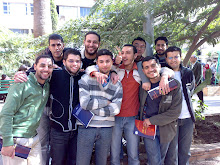No doubt that blood diseases are very common in children and teens to the degree that leukemia is considered the number one cancer in children and lymphoma is also very common but the good news is that they are of the most easy managed and treated cancers with very high survival rate so let's read more about them.
Leukemia
Leukemia is one of the most common childhood cancers. It occurs when large numbers of abnormal white blood cells called leukemic blasts fill the bone marrow and sometimes enter the bloodstream.
Because these abnormal blood cells are defective, they don't help protect the body against infection the way normal white blood cells do. And because they grow uncontrollably, they take over the bone marrow and interfere with the body's production of other important types of cells in the bloodstream, like red blood cells (which carry oxygen) and platelets (which help blood to clot).
Leukemia causes problems like bleeding, anemia (low numbers of red blood cells), bone pain, and infections. It can also spread to other places like the lymph nodes, liver, spleen, brain, and the testicles in males.
The types of leukemia most likely to occur in teens are acute lymphocytic (pronounced: lim-fuh-sih-tik) leukemia (ALL) and acute myelogenous (pronounced: my-uh-ladj-uh-nus) leukemia (AML).
Virtually all people with ALL and AML are treated with chemotherapy, and some also receive stem cell transplants, in which they are given new stem cells from another person. Bone marrow transplants are a common form of stem cell transplantation. Some people also receive radiation. The length of treatment and types of medicine given will vary depending on the type of leukemia.
The chances for a cure are very good with certain kinds of leukemia. With treatment, most patients with ALL and many patients with AML are free of the disease without recurrence.
Lymphoma
Lymphoma refers to cancer that develops in the lymphatic system, which includes the lymph nodes, thymus, spleen, adenoids, tonsils, and bone marrow. The lymph system functions in the body by fighting off germs that cause infection and illness. Most teens with lymphoma have either Hodgkin's disease or non-Hodgkin's lymphoma.
Hodgkin's disease usually occurs in adolescents and young adults. It can show up in lymph nodes in the neck, armpits, chest, or other places. The lymph nodes become enlarged but are usually not painful. Hodgkin's disease is identified by large, unusual cells called Reed-Sternberg cells that are detected under a microscope after a biopsy, a procedure in which a doctor removes a small tissue sample to examine it for cancer cells. Chemotherapy and often radiation are used to treat Hodgkin's disease.
Non-Hodgkin's lymphoma (NHL) is similar to leukemia (ALL) because both involve malignant lymphocytes (pronounced: lim-fuh-sytes), white blood cells found in lymph nodes, and because many of the symptoms of these diseases are the same. NHL is usually treated with chemotherapy.
Teens with Hodgkin's disease or NHL who have completed their treatment have an excellent chance for cure.




No comments:
Post a Comment